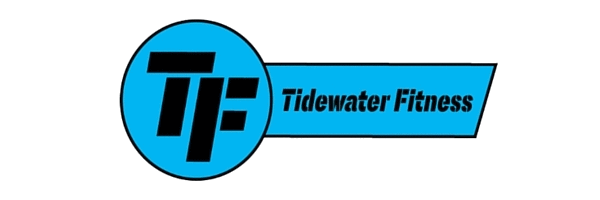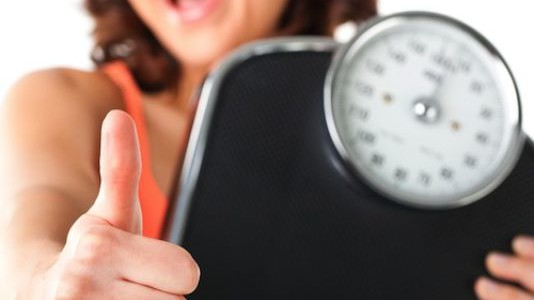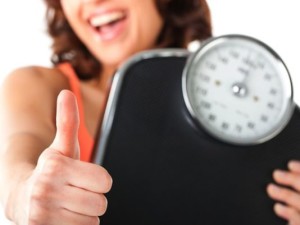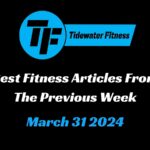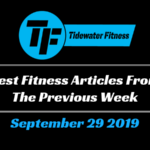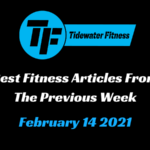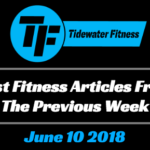Why isn’t this working anymore? I thought I was doing so well? Should I just give up?
All of these are common questions you may ask yourself when hitting a progress plateau. It’s easy to feel disappointed and frustrated in times like this. You had been working so hard, and all of a sudden the results stop.
It can be hard to pinpoint exactly where things are going wrong, but in this article I want to shed some light on the training and exercise side of the equation.
The questions above, though common, aren’t what you should be asking. Many times you’ll find your answer in the workouts you’re doing.
Here are 5 questions you need to ask to bust through a plateau and get you back on track.
1. Am I doing too much cardio?
Let me start off by saying cardiovascular exercise in and of itself isn’t bad. There are numerous health benefits. However, if your fat loss program consists of solely cardio you will not see great results.
Cardio is great at burning calories, which one would think that’s what fat loss is all about. But that’s only part of it. One of the most important pieces of the fat loss puzzle is retaining muscle mass.
This is where most people go wrong, they focus solely on the calories they burn instead of the muscle they hold on to. Muscle is what gives your body shape and definition. This is why resistance training is so beneficial.
If cardio is the bulk of your exercise, weight loss will come from muscle and fat. This is the opposite of what you want. If you lose muscle mass, it will be harder to see progress in the long run.
Not only that, you may lose weight on the scale but your body composition won’t reflect that. You won’t have that lean look that comes from fat loss.
The fix: Drop your cardio down to 1-2 days per week and add in 2-3 days of resistance training.
2. Do my workouts include multi-joint exercises?
There are two basic categories of exercises, single-joint and multi-joint.
As you may have guessed, single-joint exercise involves using one joint at a time, like a biceps curl. Multi-joint exercises involve several joints at a time, like a squat. Though these two have their place in training, the latter will benefit you more from a fat loss perspective.
Here’s an analogy for you. Would I use more gas if I drove 10 miles in one car or if a friend and I drove 10 miles in two seperate cars? The gas in the tank is analogous to calories burned. That’s exactly the difference between these types of exercises.
Single joint exercises aren’t very metabolically taxing because they use less muscle mass to complete. Because of this, the amount of calories burned is lower than with compound exercises.
Not only that, since you are using more muscle you have a greater capacity to preserve more muscle mass. As noted from above, this is the key for better body composition and results.
The fix: Include multi-joint exercises like squats, deadlifts, lunges, push ups, and rows in your program.
3. Am I lifting heavy enough in my workouts?
This is one that most people aren’t doing. If you’re doing an exercise for 25-30 reps, you’re not using enough weight.
Beginners can get away with lifting like this and still see progress. But once you’ve been lifting for several months you won’t benefit much from this number of repetitions.
Again, it all comes back to preserving muscle mass. Heavy weight and lower repetitions retain muscle better than lower weight and high reps. One of the main reasons this occurs is because the intensity is higher when lifting heavier weight.
Muscles need to be challenged in order to grow, and light weights are not going to provide a sufficient stimulus. Not only that, but one study showed you burn more calories after resistance training by lifting heavier when compared to lifting lighter weights (2). This will increase total caloric expenditure giving you better results overall.
The exercises you perform should be challenging. If they’re not, you’ll be leaving a lot of progress on the table.
The fix: Incorporate lower rep ranges like 1-6, 6-12, and 12-15 into your training.
4. Am I timing my rest periods during my workouts?
Rest periods aren’t heavily focused on by the average gym goer. In between sets or exercises, it’s common to check email, text, or talk to others. These things can overextend your rest periods and provide complete recovery.
When resistance training, you actually want to avoid recovering completely. This allows your heart rate to remain elevated throughout the training session to ensure more calories are burned. But it also produces a greater growth hormone response (1).
Growth hormone is a huge player in fat burning and muscle building. The higher it’s elevated the better your results will be. Short rest ensures this will happen.
The fix: Use a stop watch to time your rest periods. Rest 30-45 seconds for higher reps (12-15), 60 seconds for moderate reps (6-12) and 120 seconds or more for lower reps (1-6).
5. Am I having fun and enjoying my workouts?
This is the most important question of all. If you dread going to the gym and working out, you need to switch up your program.
Exercise in general should be cathartic and fun. It should allow you to de-stress and enjoy the ability to move. It shouldn’t feel like something you have to do. If you feel it has become like that, you need to make a change.
There are numerous things you can try. For example, if you are lifting weights in the 10-12 rep range, take the next month and focus on lower reps (4-6) and heavier weights. Or you could try bodyweight training instead of resistance training.
If you enjoy your training, you will continue it. And that is crucial to seeing long-term progress.
The fix: Try a new exercise, a new rep range, a new training method, etc. to keep your training fresh.
*****
When you hit a stalling point, its easy to feel defeated. The questions I started this article off with are what the majority of people will think. Don’t be one of them.
The answer may lie in the way you have been training. Be sure to ask yourself these five important questions and you’ll be well on your way to busting through your plateau.
References:
1. Rahimi R, et al. Effects of very short rest periods on hormonal responses to resistance exercise in men. J Strength Cond Res. 2010 Jul;24(7):1851-9.
2. Thornton MK, et al. Effects of resistance exercise bouts of different intensities but equal work on EPOC. Med Sci Sports Exerc. 2002 Apr;34(4):715-22.
Photo Credit:
1. http://www.floridatoday.com/story/life/wellness/2014/03/27/the-scaleis-a-liar/6919953/
